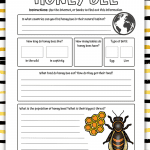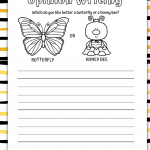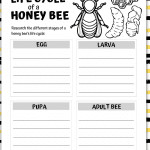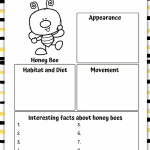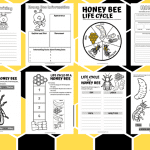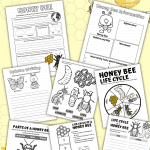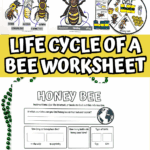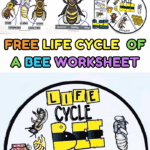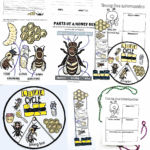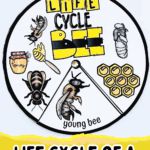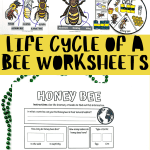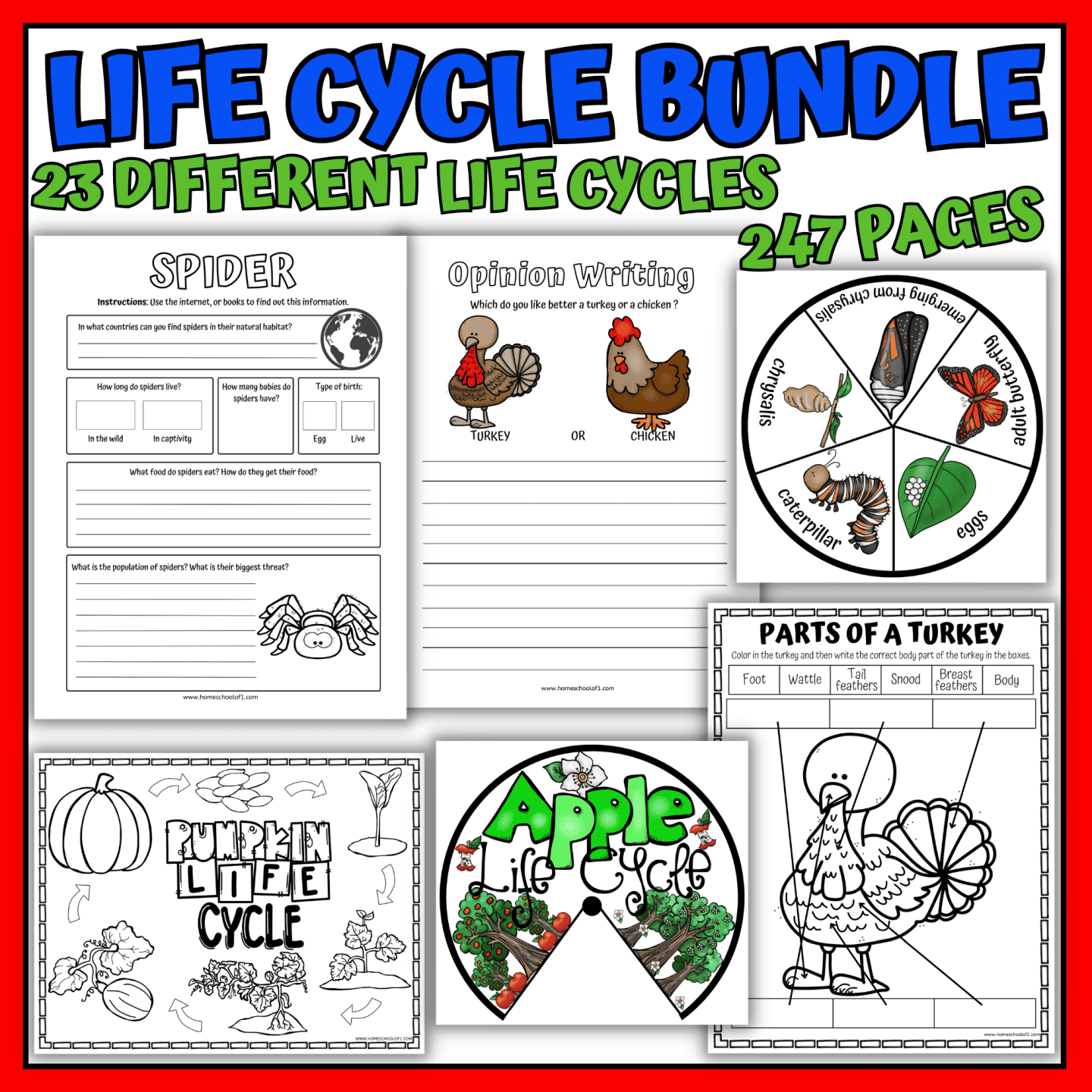Free Life Cycle of a Bee Worksheet for Kids
The life cycle of a bee worksheet is a fun way to cover basic science without overcomplicating it.
It includes coloring, labeling, research, and cut-and-paste activities that walk kids through each stage, from egg to adult.
My son enjoyed building the spinner and filling in the bee facts, and it worked well for a quick spring science activity without needing extra prep.
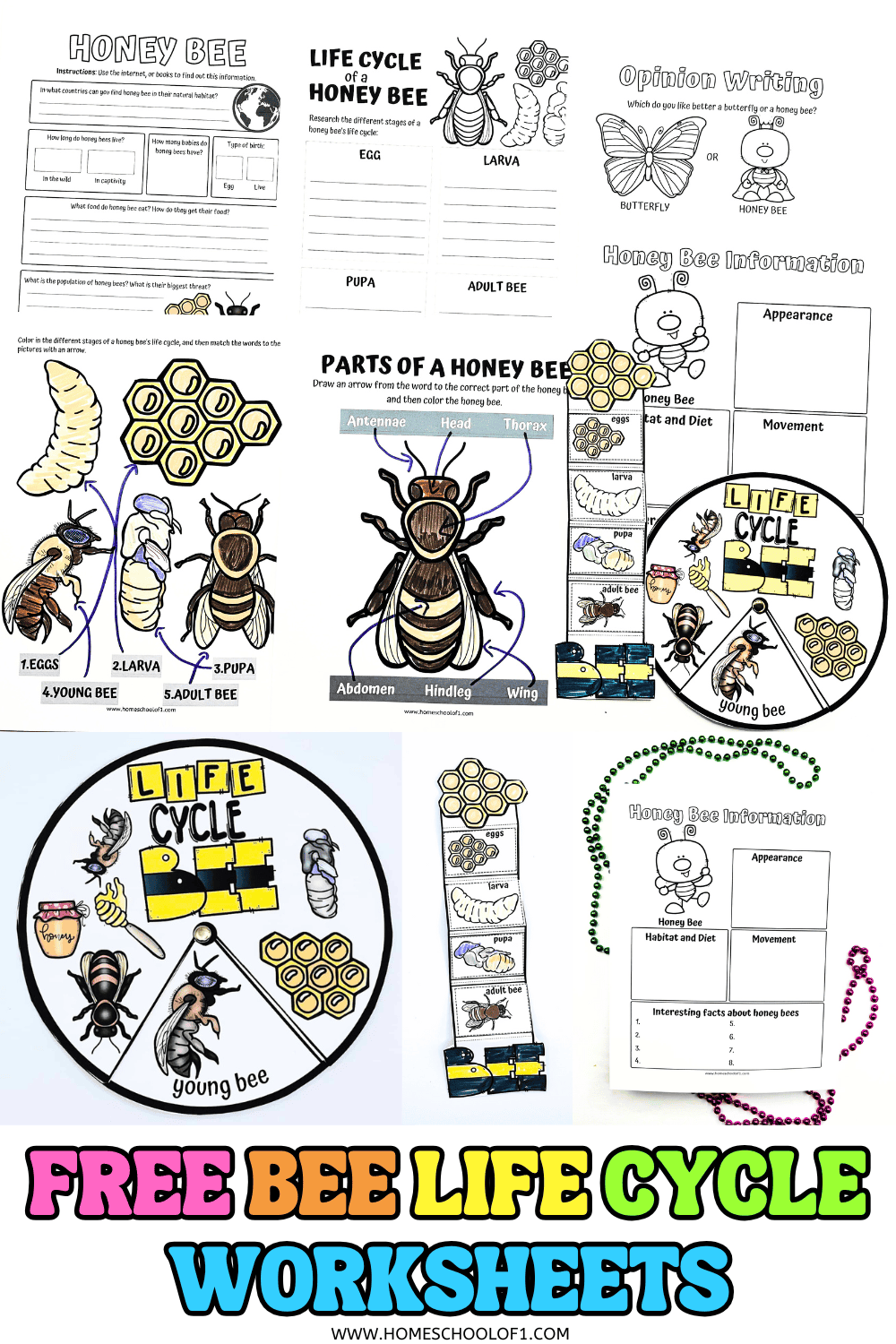
**This post may contain affiliate links. As an Amazon Associate and a participant in other affiliate programs, I earn a commission on qualifying purchases.**
Bee Life Cycle Printable
Our free life cycle printable is an easy way to teach kids about one of nature’s most important pollinators. It walks them through each stage, while mixing hands-on activities, labeling practice, and simple research prompts.
The pack includes a mix of science worksheets that work well for classroom science units or at-home nature study.
Whether you’re exploring pollination or just diving into insect life cycles, this printable set helps kids understand how bees grow, how they function in a hive, and why they matter.
Research Honey Bee Worksheets
One of the first activities gets kids thinking about how honey bees live. They’ll explore appearance, habitat, diet, and movement, building a better understanding of the bee’s role in the ecosystem.
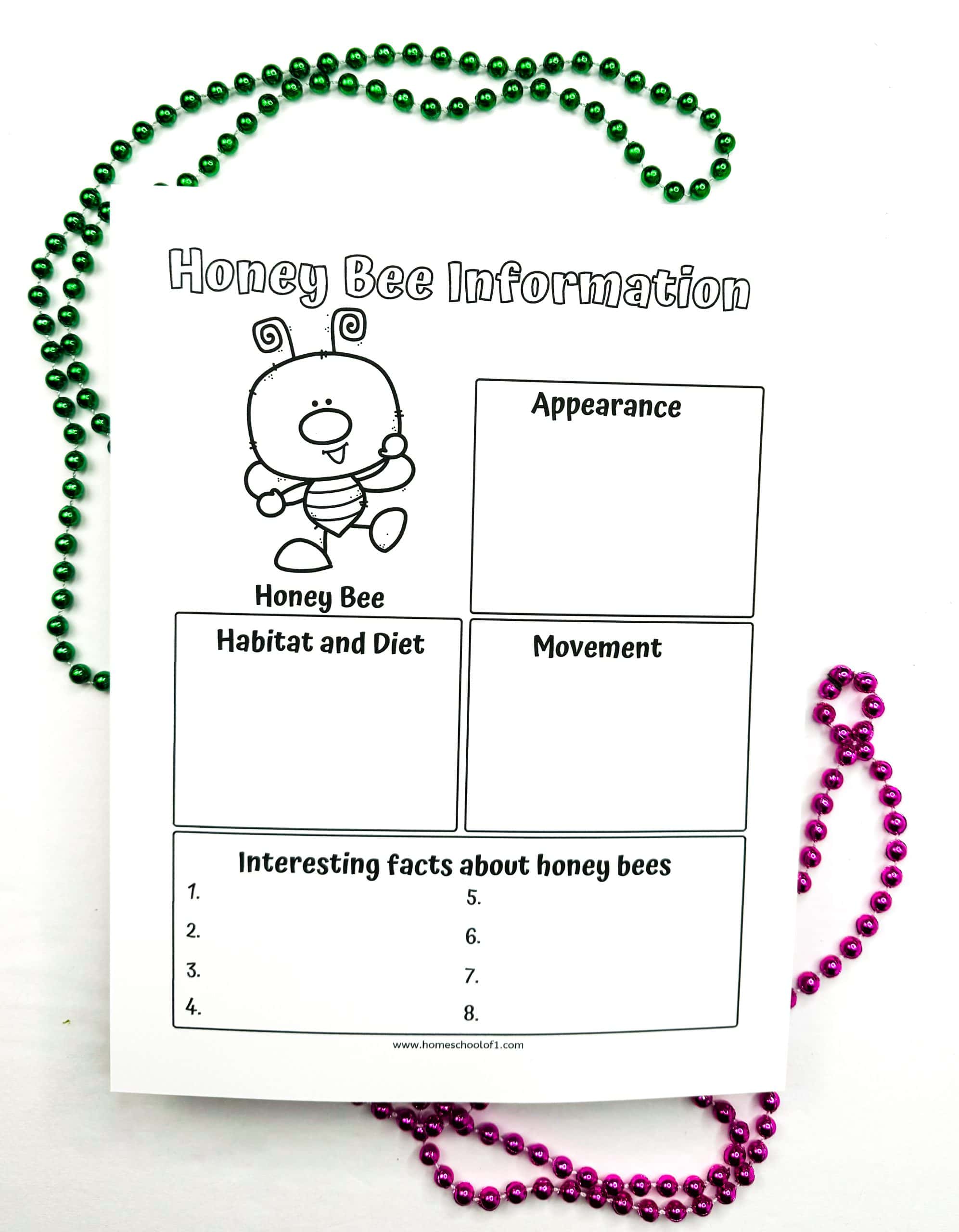
Interesting Facts About Bees for Kids
This worksheet is packed with bee trivia that’s great for sparking curiosity:
- Honey bees never sleep.
- A single bee can fly up to 15 mph.
- Their wings beat around 11,400 times per minute.
- One worker bee only makes about 1/12 teaspoon of honey in her life.
- In summer, the queen can lay up to 2,500 eggs per day.
- Bees live in hives with queens, workers (all female), and drones (male).
- If the queen dies, workers create a new one by feeding a larva “royal jelly.”
- Some bees even live underground and are just as important for pollination.
We like to pair this with the Life Cycles book, it’s a simple way to add more context without making things complicated.
Honey Bee Opinion Writing Activity
This worksheet compares bees and butterflies and encourages kids to choose which they like better and explain why. It’s a fun way to build writing skills while sticking to the theme of pollinators.
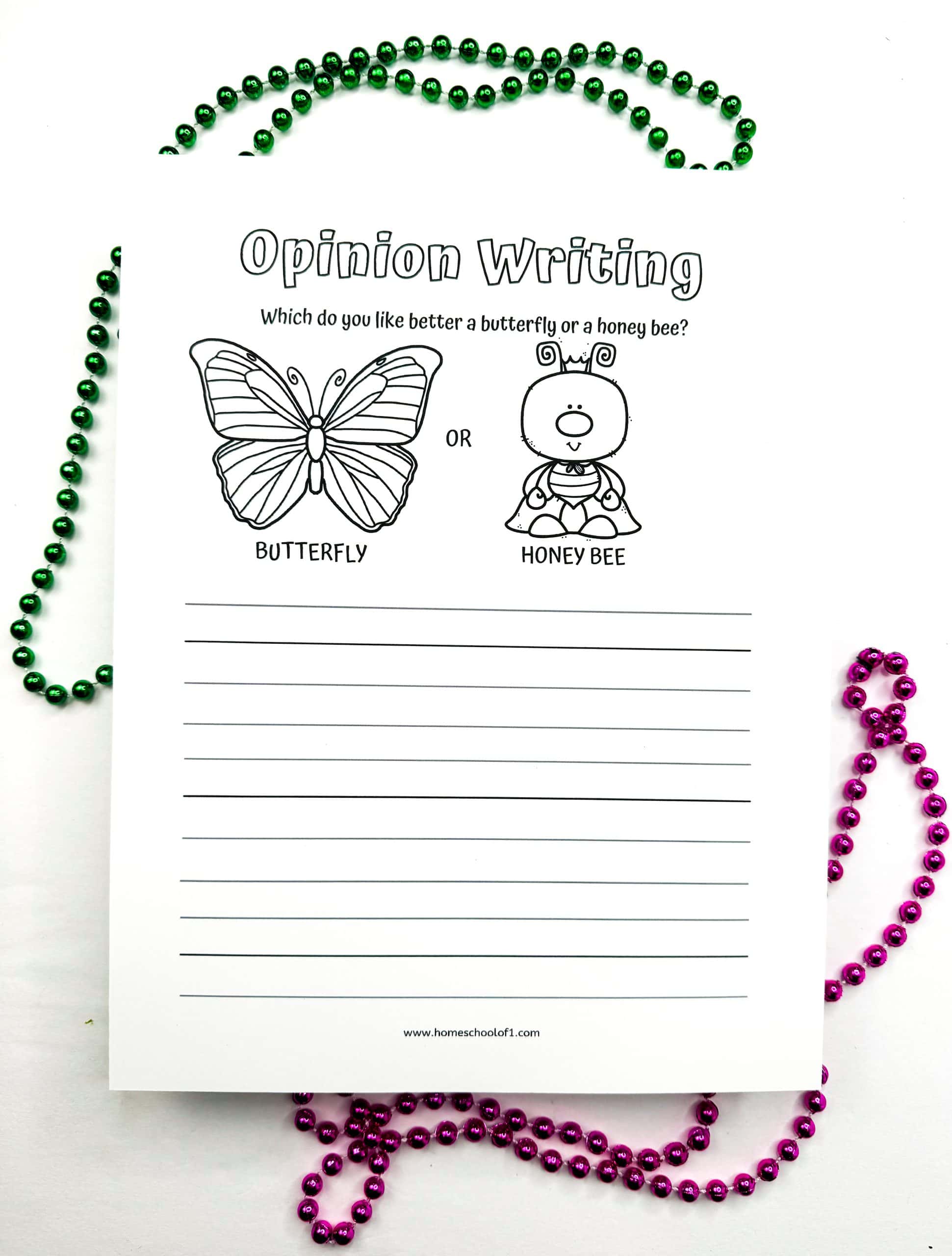
Honey Bee Fact Sheet (Research)
This activity invites kids to dig deeper into bee biology. They’ll answer questions about:
- Bee habitats and lifespan (wild vs. managed)
- Food sources and how they gather nectar
- Global population trends
- Threats bees face today
It’s a simple intro to guided internet research, perfect for grades 2–4.
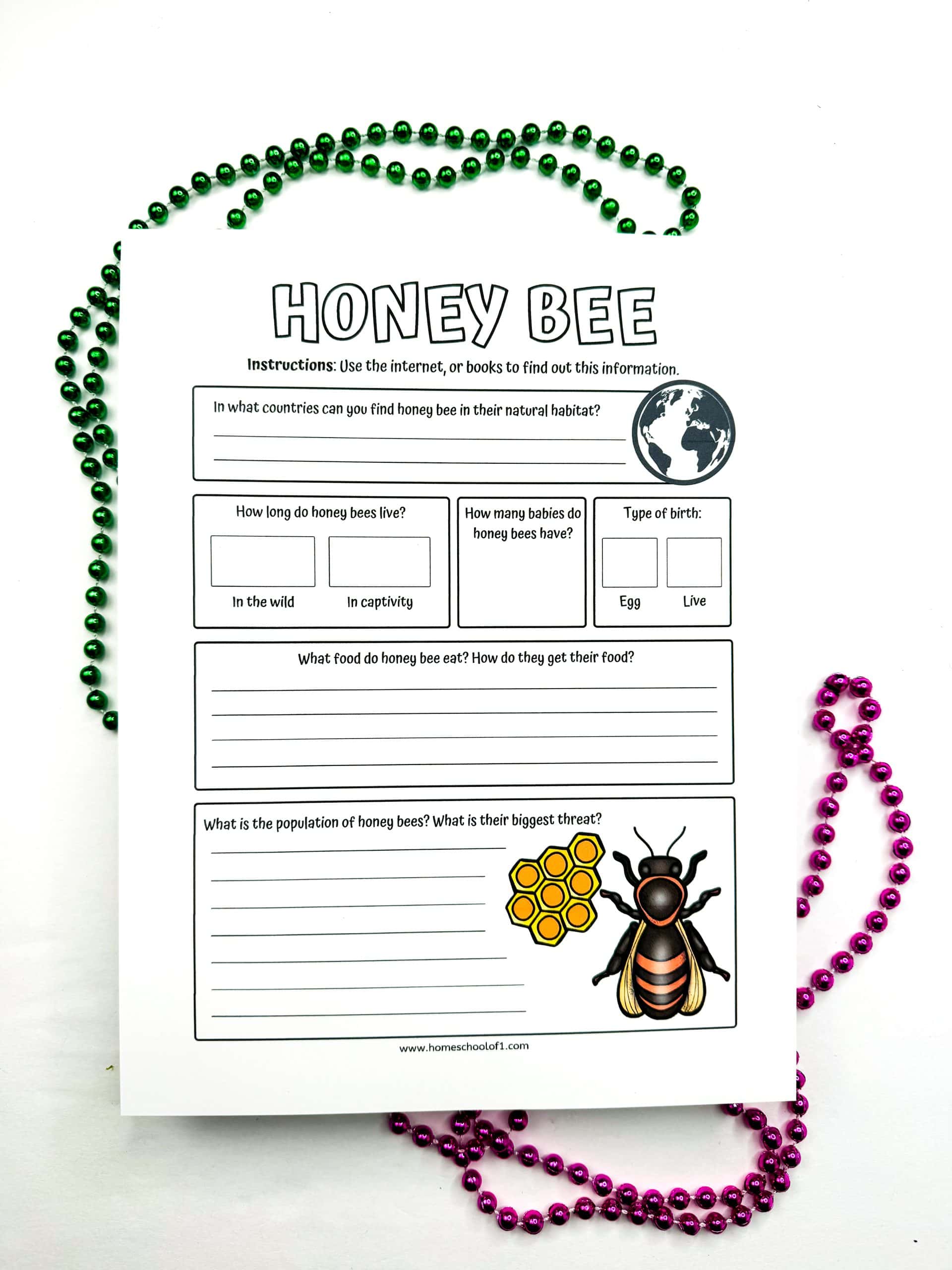
Life Cycle of a Bee: Four Stages
Another page focuses directly on the bee life cycle: egg, larva, pupa, and adult. Kids color, label, and match each stage to a diagram, reinforcing what they’ve learned.
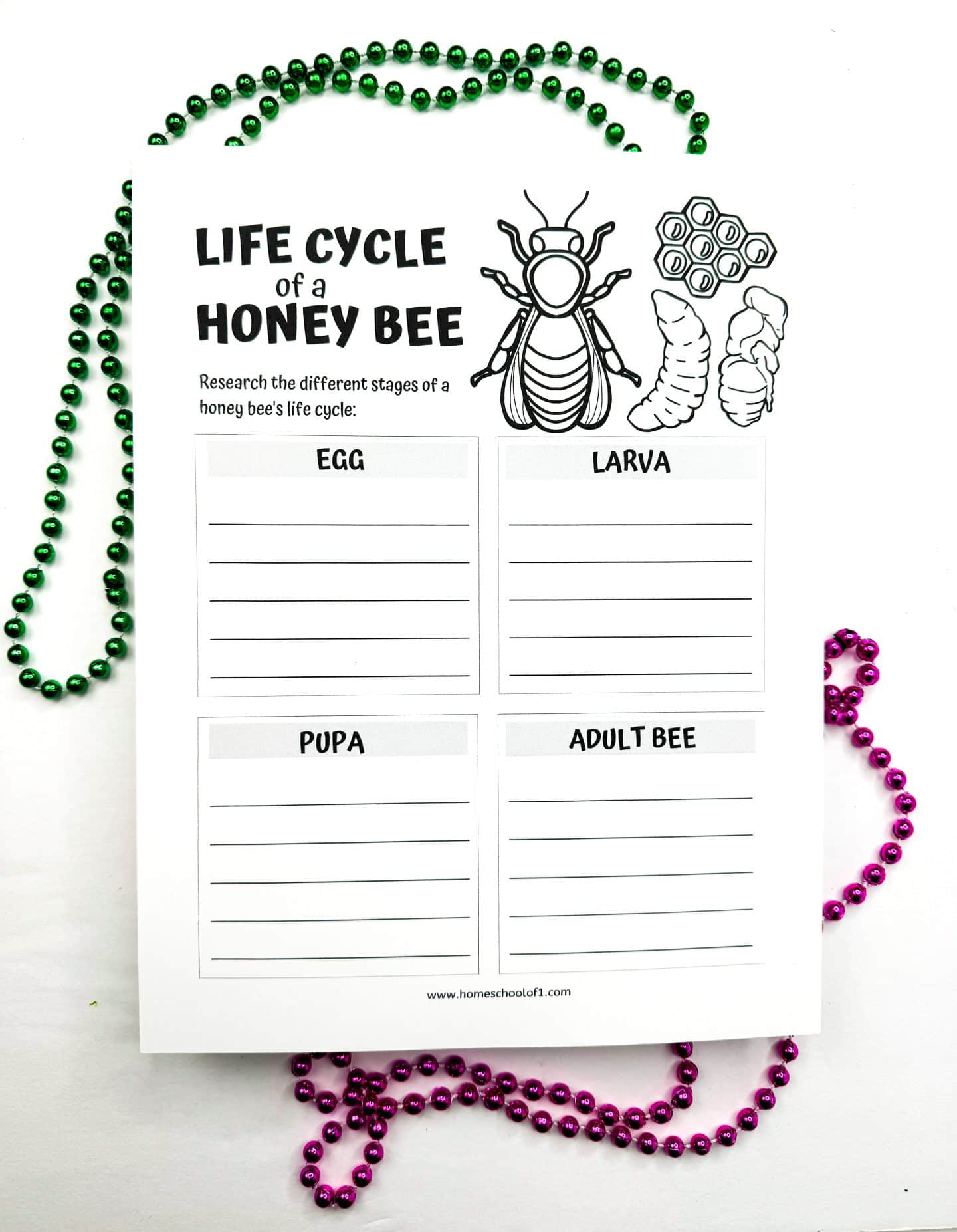
Labeling Activities
Two worksheets focus on labeling:
- Parts of a bee worksheet – Kids match terms like antennae, thorax, and hindleg to a diagram.
- Bee life cycle coloring page – Kids color and label each stage from egg to adult.
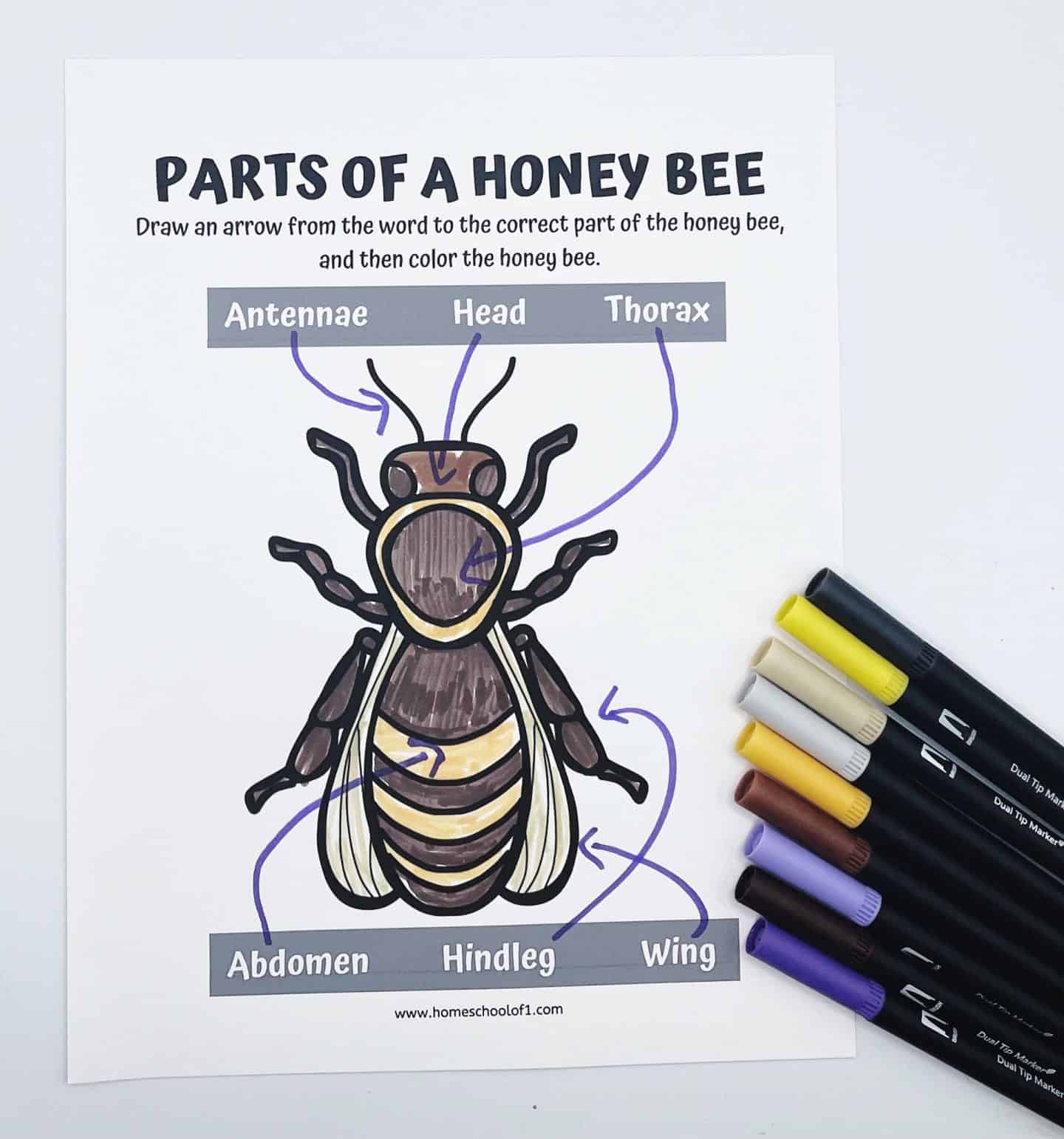
These are great for younger learners who benefit from visual reinforcement.
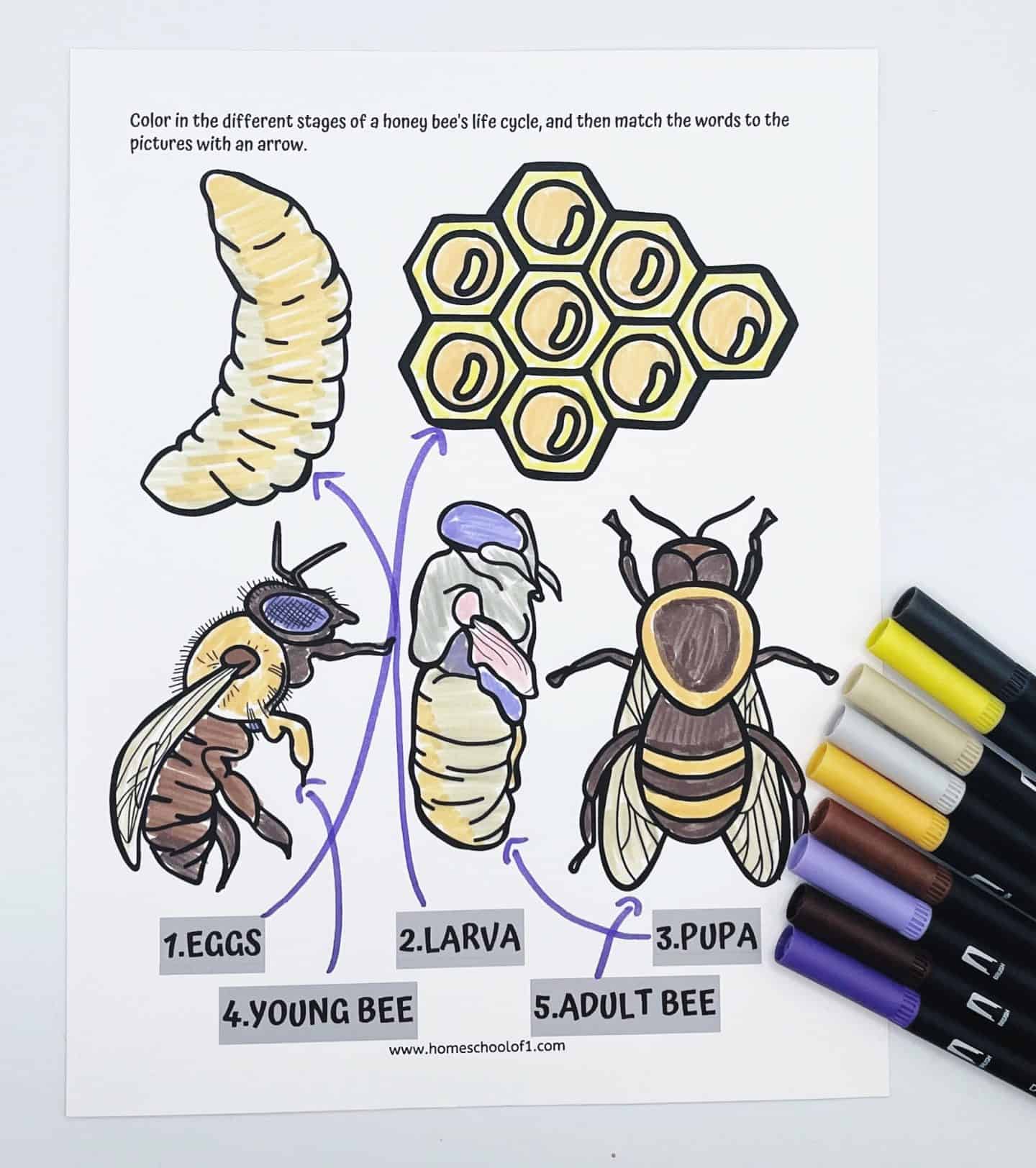
Bee Life Cycle Craft
This printable craft walks kids through cutting, folding, and gluing the life cycle into place.
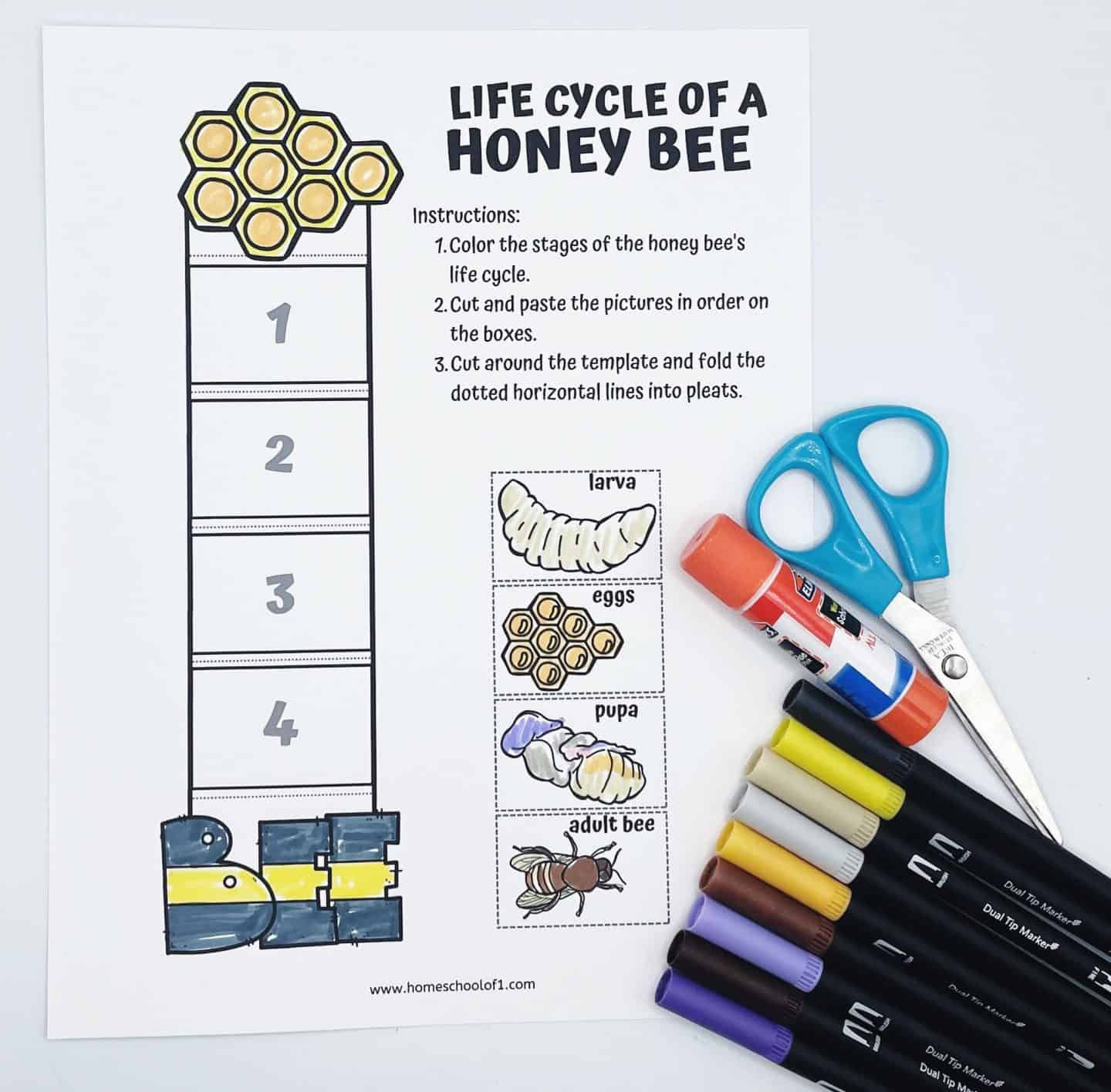
It’s hands-on, easy to prep, and gives them a visual they can refer back to.
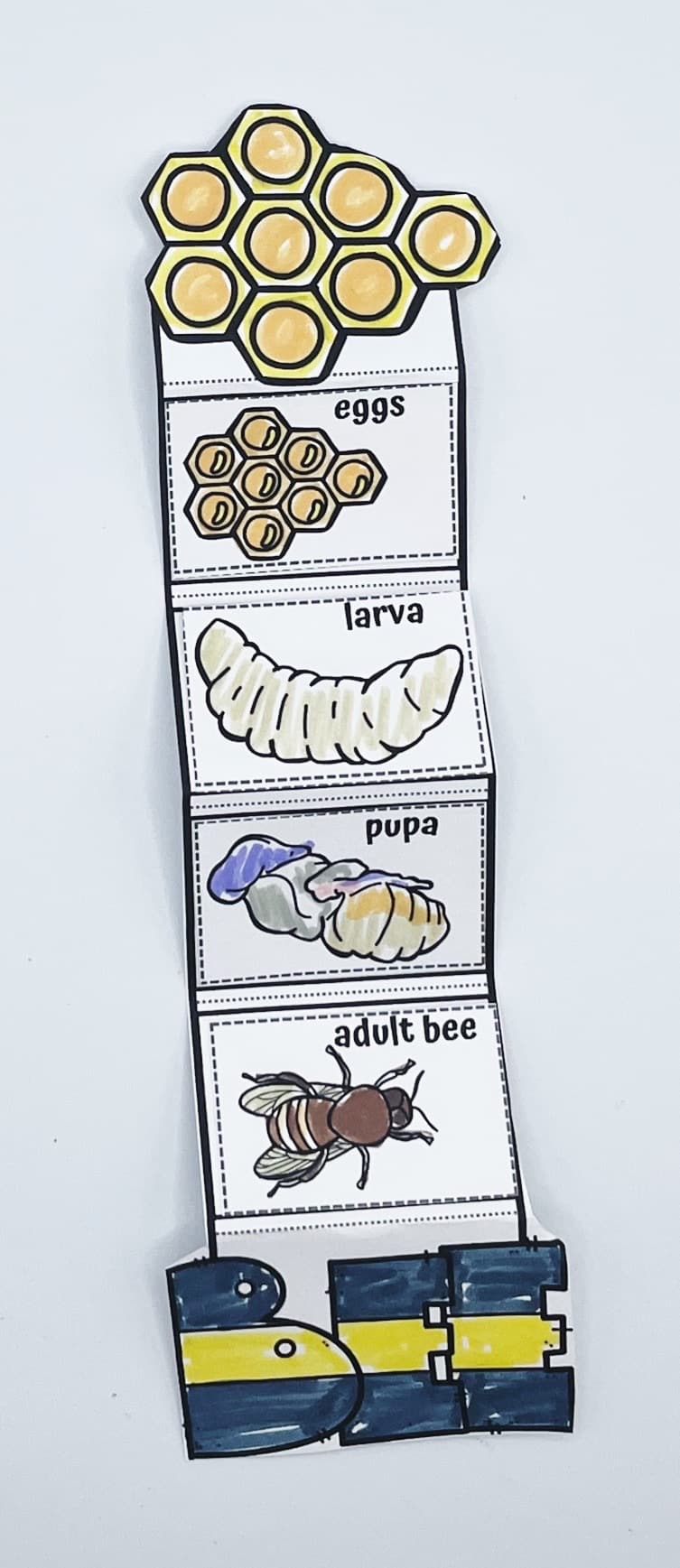
Bee Life Cycle Wheel
The spinner-style wheel is a fun way to review the stages. Kids cut two circles, attach them with a fastener, and spin to reveal each part of the life cycle.
It’s simple but always a favorite in our house.

More Bee Printables
Keep the learning going with a few more bee-themed activities:
- Wrap things up with a honey bee word search, a simple, screen-free way to reinforce vocabulary.
- Try our bee word scramble to challenge problem-solving and spelling skills.
- B is for Bee handprint craft is a fun option for younger kids who love getting creative.
Books About the Life Cycle of a Bee
Here are a few bee books we’ve enjoyed alongside our worksheets:
- Honeybee: The Busy Life of Apis Mellifera by Candace Fleming – A bit longer, but worth it. This one follows a bee named Apis from birth to her final flight, with poetic storytelling and detailed art.
- I Am A Bee – A simple and beautifully illustrated story that introduces young kids to the life of a honeybee, from egg to pollinator. Great for early readers.
- Explore My World: Honey Bees by Jill Esbaum – This one’s packed with real photos and fun facts, making it a solid choice for curious kids who want to know how hives work and what each bee does.
Get Your Free Printable Bee Life Cycle Worksheets Here!
Short on time? Grab our complete collection of life cycle worksheets, featuring 247 pages covering 23 different life cycles, all in one convenient bundle.
Ready to grab your free printable? Just pop your name and email into the form below, and it’s all yours!
If you don’t see the form below, click here to get the free life cycle of a bee worksheet.
Last Updated on 30 April 2025 by Clare Brown

